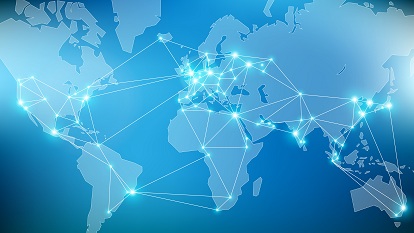Asian grid builds on European experience to further international research

Related topics
International cooperation European Research infrastructures, incl. e-infrastructures Czechia France Italy United Kingdom Indonesia Malaysia Philippines Australia Singapore Taiwan Thailand VietnamAccording to the project coordinator, Marco Paganoni, full professor at University of Milano-Bicocca and National Institute of Nuclear Physics (INFN), the Asia Federation was central to the success of the project. This partner had already built good relations with the CERN Large Hadron Collider (LHC) initiative that uses the middleware computer programme on which the new Asian e-Science Grid was based.
The EUAsiaGrid project drew on the experiences of European initiatives, namely Enabling Grids for E-sciencE (EGEE-III), which offers a range of applications. Efforts to create a European grid were initially undertaken in response to the massive volume of data coming from the LHC project. “The project team needed to provide easy access to data for all people involved in the project, independent of their location,” explains Prof Paganoni.
“Once the infrastructure and the middleware programme were created, it was clear that this could also be of interest to other scientific communities – other crunchers of big data, such as biologists, astrophysicists, chemists, experts on disaster mitigation and social sciences. Data has an increasingly important role in scientific investigation,” says Prof Paganoni.
The EUAsiaGrid project was able to connect researchers in different countries in Southeast Asia with their counterparts in Europe “in order to build new partnerships and foster science”, says Dr Simon Lin, from Academia Sinica in Taipei, one of the international partners involved in the project. Taiwan was one of the first countries in Asia to join the EGEE initiative. “Our role was to help the project partners work together by taking advantage of the global collaboration on infrastructure,” says Dr Lin.
Security was initially a key issue. However, the Asian partners overcame this challenge by establishing “grid certificate authorities in several countries”, explains Dr Lin.
“The most important aspect was the added-value of the collaboration. Researchers were able to talk to experts about the applications they were interested in, and then identify elements they could combine with local data,” he adds.
Prof Paganoni emphasises that the EUAsiaGrid project generated new possibilities for innovative applications, adding that Dr Lin and his team had been “frontrunners in applying the e-Science paradigm”.
One good example of the wide range of applications stemming from the project is the South China Sea tsunami warning system. The grid is allowing locally recorded data to be shared between Taiwan, the Philippines and Vietnam. “We can collect data from high-quality sensors in order to create a hazard map, so for example, when an earthquake happens the warning system can produce a movie of what had occurred that can be then shared,” explains Dr Lin.
Large-scale drug screening is another key application. As part of the EUAsiaGrid project the team focused on diseases that pharmaceutical companies have overlooked, such as dengue fever, an infectious tropical disease. Many countries in Asia provided resources for the screening, and the results were published for public use. In addition, the grid has also been used for social migration, climate and cultural heritage initiatives.
“Most of the projects that we started are being carried on an even wider scale thanks to the CHAIN-REDS project, which is continuing the efforts of the regional projects initiated by the EUAsiaGrid. CHAIN-REDS, which is coordinated by the INFN in Italy, is gathering all the good practices of these different projects and putting them all together in a single worldwide project,” concludes Prof Paganoni.
